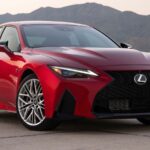The iconic Jeep, a symbol of American ingenuity and military might, was conceived from the urgent need of the U.S. Army in 1940 for a versatile, lightweight, four-wheel drive vehicle. This call for a “general purpose” vehicle capable of traversing rough terrain and mounting a light machine gun led to initial submissions from American Bantam and Willys-Overland. Bantam’s Reconnaissance Command (BRC) and Willys-Overland’s Quad (4×4) were the first contenders, undergoing rigorous testing and paving the way for a vehicle that would become indispensable in World War II.
The final Jeep design emerged as a collaborative effort, incorporating the best features from the early prototypes. It married Bantam’s reliable Spicer-sourced four-wheel drive transmission and differential with the powerful Willys’ Go-Devil engine, all encased within the functional bodywork design initially proposed by Ford. Production rapidly scaled up from fewer than 100 units in 1940 to approximately 8,500 in 1941, manufactured in slightly different versions by Bantam (BRC-40), Willys (MA), and Ford (GP). Standardization came in late 1941, solidifying the Jeep’s core components: the Spicer differential, the robust Go-Devil engine, and the practical Ford-style body. Mass production ensued under Willys as the Model MB and Ford as the Model GPW, reaching a staggering 639,235 units by the war’s end, with Willys contributing over 360,000 alone. Ford also developed a specialized amphibious variant, the Model GPA “Seep,” with nearly 13,000 produced. In total, from 1940 to 1945, an astounding 647,925 Jeeps were manufactured, demonstrating its critical role in the war effort.
The Jeep’s versatility on the battlefield was unmatched. It served as a mount for cavalry reconnaissance, a command vehicle for officers directing troops, and a vital logistics asset hauling supplies across challenging terrains. From airfields in Brazil to battlefields in Britain, Italy, Guadalcanal, and Iwo Jima, Jeeps transported aircrews, carried wounded soldiers on litters, and ferried generals and admirals. They were even deployed to pull light artillery pieces and, in a symbolic gesture, allowed President Roosevelt to review troops. Special Air Service units utilized Jeeps for daring raids behind enemy lines. On D-Day, they were deployed in gliders, mirroring their role with the Chindits in Burma. Jeeps stormed beaches in Italy, France, the Philippines, and Okinawa, and triumphantly entered liberated cities like Rome, Paris, Berlin, and Tokyo, embodying the Allied advance.
Alongside the Douglas C-47 Dakota/Skytrain and essential landing craft like the Higgins Boat and LST, the Jeep is widely recognized as a pivotal factor in the Allied victory in World War II. Its ruggedness, adaptability, and sheer ubiquity made it an indispensable asset, forever etching its place in military history and influencing vehicle design for decades to come, even inspiring civilian vehicles and uniquely adapted transportation like the “jeepney” in the Philippines, a testament to the Jeep’s enduring legacy that started in the battlefields of World War 2.
